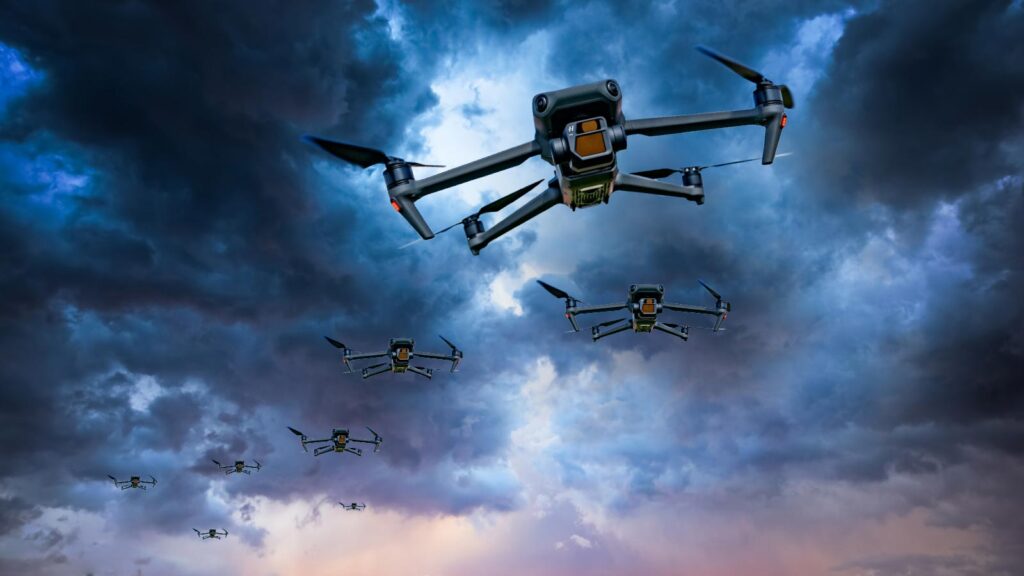In a stunning reversal of battlefield dynamics, Russia’s military—once feared as the dominant airpower of the post-Soviet world—is being systematically dismantled by an opponent it underestimated from the outset: Ukraine. Not on the front lines, but in the very heart of the Russian Federation. And it’s not with stealth jets or billion-dollar defense systems. It’s with ingenuity, precision, and drones that cost less than a Moscow dinner party.
June 2025 marked a turning point.
Ukraine, through an unprecedented wave of long-range drone strikes, destroyed more Russian strategic bombers and stealth fighters inside Russia than Moscow lost during the first half-year of its full-scale invasion in 2022. These were not symbolic victories. They were surgical strikes—crippling blows to Russia’s operational aviation, logistics, and industrial base. The results have humiliated the Kremlin, exposed deep vulnerabilities in Russia’s air defense network, and forced Moscow into the unfamiliar and deeply uncomfortable position of playing defense on its own territory.
A War No Longer Confined to the Front
Russia’s war against Ukraine has long relied on its supposed air superiority. The Tupolev Tu-95 “Bear” bombers launched devastating cruise missiles deep into Ukrainian territory, targeting energy infrastructure and apartment blocks alike. The Su-34 tactical bombers dropped unguided bombs on Ukrainian cities, reducing civilian areas to rubble. And the Su-57, Russia’s much-touted stealth fighter, was meant to symbolize a futuristic, invincible air force.
Now, many of those aircraft lie in twisted ruin on Russian airfields—destroyed not in dogfights, but by cheap, smart Ukrainian drones that flew hundreds of kilometers into Russian territory without being intercepted. Some airbases hit are more than 1,300 kilometers from the Ukrainian border.
This is not just embarrassing. It’s transformational.
Russia has now lost a significant percentage of its functional fleet of Tu-95s, Su-34s, and Su-57s. It has been forced to disperse surviving aircraft to distant bases—further stretching already fragile logistics chains—and to reconsider the very notion of strategic depth within its borders.
The Kole Plant Strike: A Symbol of Strategic Collapse
Among the most consequential of these attacks was the June strike on the Kole Electromechanical Plant in Izhevsk, Russia. This was not just another defense facility—it was the only mass producer of the TOR-M2 air defense systems and OSAA short-range systems. In one decisive drone operation, Ukraine knocked out Russia’s capacity to replace or expand its air defense infrastructure.
That is catastrophic for Moscow.
With its ability to intercept drones and missiles dramatically weakened, every remaining strategic asset inside Russia—be it a base, refinery, munitions depot, or command center—now lies more vulnerable than ever. For Ukraine, it means fewer risks in launching deep strikes. For Russia, it means sleepless nights.
Even before this attack, Russia’s air defense was underperforming. Between January and May 2025, over 250 civilian airports across Russia were forced to shut down due to airspace breaches by Ukrainian drones. By the end of June, that number had climbed even higher. And these aren’t obscure outposts. We’re talking about Moscow’s Vnukovo, Domodedovo, and Zhukovsky—repeatedly closed for hours at a time.
The effect? Beyond the tactical disruption, it’s a psychological victory. Russian civilians are watching the skies, not for fireworks or parades, but for explosions. The regime promised protection. It delivered paralyzing insecurity.
A Shrinking Arsenal and Shattered Pride
Let’s talk numbers. Ukraine’s Operation Spiderweb, launched at the start of June, achieved results that stunned even seasoned analysts.
-
Tu-95 Bombers: Of Russia’s estimated 56, only around 40 were considered operational. Up to 33% of those were destroyed or rendered inoperable in just one wave of strikes.
-
Su-57 Stealth Fighters: Russia has only 14 of them. Two were confirmed destroyed. That’s 14% of the fleet—and a devastating blow to Russia’s PR narrative of technological superiority.
-
Su-34 Tactical Bombers: With roughly 100–110 operational aircraft, Ukraine managed to destroy at least 5% in June alone, forcing Russia to reschedule bombing sorties and alter strategy.
-
A-50 AWACS Surveillance Aircraft: Russia had 9. After Ukraine’s strikes, only 6–7 are believed to be airworthy—crippling Moscow’s situational awareness.
This is not attrition. It’s amputation.
Each strike sends shockwaves through Russia’s military command structure. Each destroyed aircraft is a lost investment in billions of rubles, training hours, and capability. And unlike Russia’s manpower, these machines can’t simply be replaced with another mobilization decree.
A War Fought with Intelligence, Not Just Force
Ukraine’s strategy stands in stark contrast to Russia’s. Where Moscow leans on quantity—mass conscription, brute force, saturation bombing—Kyiv relies on precision, innovation, and agility. This is a war being won not by who has the most tanks, but by who has the better coders, engineers, and thinkers.
Much of Ukraine’s drone capability is homegrown. A decentralized ecosystem of volunteers, startups, and military specialists work together to innovate faster than Russia can adapt. New drones are constantly being prototyped, field-tested, and deployed—often in a matter of weeks.
Meanwhile, Russia remains locked in a web of corruption, rigid command hierarchies, and outdated procurement processes. Its drone fleet—largely dependent on Iranian Shaheds—is less accurate, less flexible, and far more costly to deploy logistically.
The Bigger Picture: Why This Matters
Ukraine’s drone campaign is not just tactical. It’s strategic. It denies Russia the ability to maintain air superiority. It forces Russia to redirect scarce resources to defense rather than offense. And it sends an unmistakable message to the Russian people: you are not safe. Your regime cannot protect you.
For the first time, the war is not just a television segment for Russians. It’s real. It’s audible in the sky. It’s visible on the tarmac. It’s undeniable in the flames lighting up distant military zones on their Telegram feeds.
And most critically—it undermines the central myth that has held Putin’s empire together for 25 years: control.
The End of Air Superiority—and Maybe More
This past month may well be remembered as the moment when Russia lost the last remnants of its airpower dominance. But it may also be something more—a signpost pointing toward a broader unraveling of Putin’s grip on power.
A state that cannot protect its skies, cannot manufacture its own defenses, and cannot even keep its capital’s airports open for business is not a strong state. It is a failing one.
Ukraine’s strategy is working. Not by winning every inch of ground at the front line—but by turning Russia’s own strength into its greatest weakness. By bringing the war home, Ukraine has changed the game.
And Russia, for all its bluster, doesn’t appear to know what to do next.



